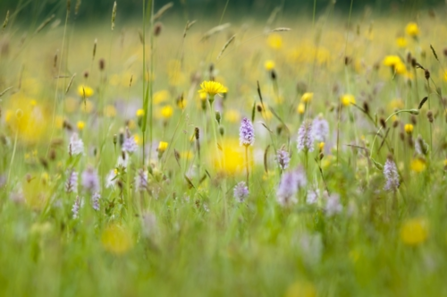Chelsie Phillips from Wild Landscapes tells us how to make our own wildflower meadow!
Natural wildflower meadows are one of the rarest habitats in the UK and we have lost 97% of our wild flower meadows since the 1930s. They are a hugely diverse habitat that supports hundreds of species of invertebrates, namely pollinators such as bees. Land development and farming have all contributed to this decline but our own gardens and green spaces can offer a small haven for wildlife.
There are a variety of wildflower seeds on offer and we would always suggest choosing native and local provenance where possible.


